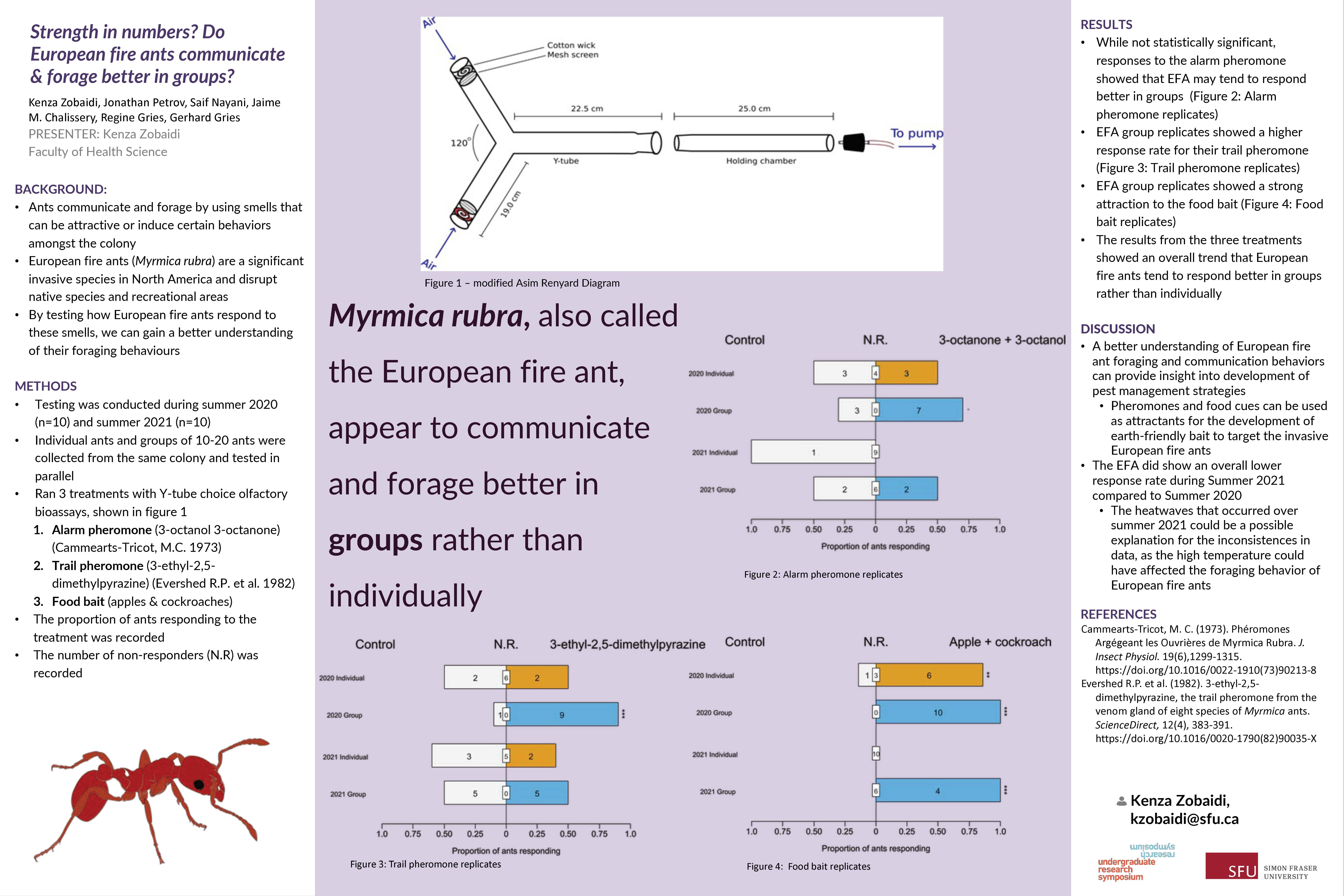Strength in numbers? Do European fire ants communicate and forage better in groups than on their own?
Main Article Content
Abstract
European fire ants (EFAs), Myrmica rubra, are significant pests in their invaded North American range, altering the composition of arthropod communities and rendering urban parks unusable for recreational activities. EFAs deposit trail pheromone (3-ethyl-2,5-dimethylpyrazine) to mark trails between their nest and food sources, and they emit alarm pheromone (3-octanone & 3-octanol) to convey danger to nestmates. In prior studies, attraction of EFAs to these pheromones was demonstrated with groups of EFAs but could not be confirmed with single EFAs. Here we tested the hypothesis that EFAs indeed communicate and forage in groups. In Y-tube olfactometer experiments using a gentle airflow, we tested both single EFAs and groups of EFAs for attraction to airborne synthetic trail pheromone, synthetic alarm pheromone, and natural food odorants. While the 2020- and 2021-data are not entirely consistent (due possibly to the heatwave this summer), there is emerging evidence that groups of EFAs respond better than single EFAs to pheromone signals and to foraging cues.
Faculty Supervisor:
Dr. Gerhard Gries, Department of Biological Sciences, Simon Fraser University
Reseach Team Members: Jonathan Petrov, Saif Nayani, Jaime M. Chalissery, Regine Gries, Simon Fraser University
Article Details

This work is licensed under a Creative Commons Attribution-NonCommercial-NoDerivatives 4.0 International License.

